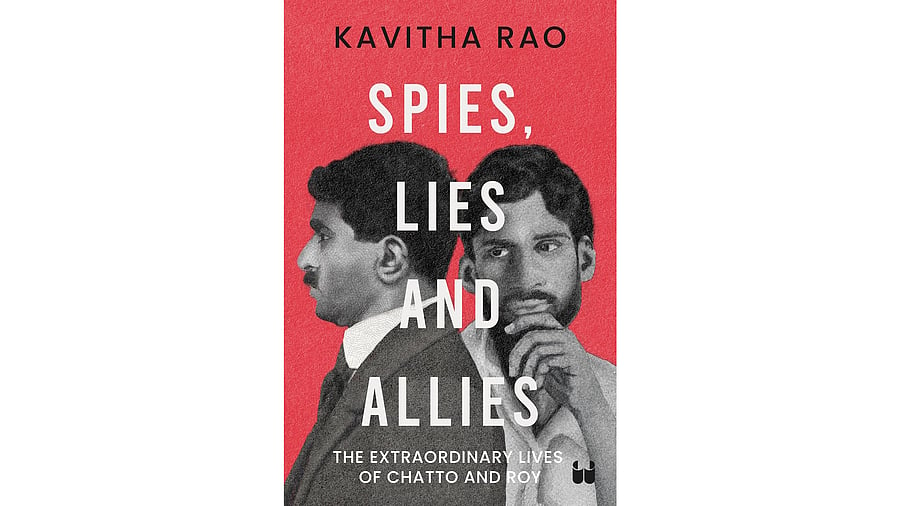
Spies, Lies And Allies
History has always found a way to judge failure, particularly those grand, luminous failures that, for a time, burned with the intensity of genuine ambition.
Kavitha Rao’s Spies, Lies, and Allies undertakes the formidable task of recovering the lives of two revolutionaries whose extraordinary trajectories, despite their ideological fervour and relentless political engagement, have largely been relegated to forgotten records. It is a richly textured narrative of two magnificent figures, Virendranath Chattopadhyay and M N Roy.
Rao meticulously traces their movement from the charged political climate of British India to the revolutionary ferment of Mexico, London, Berlin, Stockholm, and beyond. Theirs was a life of convergence and divergence—of forging and dismantling ideological convictions, momentary alliances and enduring betrayals, exile and return, and ultimately, of erasure. Among them is Viren Chattopadhyay, or “Chatto,” as he was known, a forgotten figure in the shadow of his more famous sister, Sarojini Naidu.
Both were men of contradictions, thinkers, and agitators whose trajectories refused to align with the dominant narrative. Rao masterfully captures their ambitions and failures with a rare blend of historical rigour and literary finesse. She writes with the precision of a historian, yet never allows the weight of analysis to stifle the vitality of her prose.
To Rao’s credit, as always, is her depth of research—an achievement made all the more remarkable given the paucity of archival material.
She traces the ideological evolution of Chatto and Roy with meticulous care, from their formative years, steeped in nationalist fervour, to their eventual disillusionments and radical reinventions. She captures the intellectual pantheon that shaped them—the revolutionaries they admired, the mentors they outgrew, the ideals that first inspired and then disillusioned them. Restlessness is the defining motif of both their lives, both physical and intellectual, that propels them across continents and ideological spectrums.
But was it history that rendered them restless, or was it their innate restlessness that shaped their place within history? Rao does not impose a singular answer but instead allows the contradictions to shape, presenting their ideological conflicts not only with each other but within themselves.
They were men of ideas—ideas that brimmed with revolutionary zeal, that evolved as swiftly as they travelled, and that, at times, consumed them. Some of these ideas proved untenable, leading to disappointment and exile; others survived them, remaining in the histories that sought to erase them, tracing their initial engagements with anarchist and revolutionary circles, dashing hopes, and leading to ideological migrations.
Nationalism was their starting point, but it was never their end. For both, the early promise of nationalist revolution gave way to more expansive, internationalist visions—only to culminate in bitter disillusionment.
The result is a work of remarkable depth and narrative fluidity, one that restores these enigmatic figures to their rightful place. Rather than focusing solely on the men themselves, she examines the conditions that forged them, the intellectual and political milieus that shaped their radicalism, and what ultimately rendered them as figures of liminality rather than power. Chatto and Roy, who once stood at the heart of global revolutionary currents, would ultimately be reduced to footnotes in the grand nationalist historiography—obscured by the fundamental incompatibility of their stories with the ideas that postcolonial India chose to enshrine.
What Rao seeks to accomplish and does so with extraordinary depth is a resurrection of these figures from the peripheries of history.
With a vast and meticulous sweep of archival research and a keen sensitivity to intellectual nuance, she reconstructs their lives with a rare fidelity to their contradictions and struggles. Yet, for all the brilliance of Rao’s reconstruction, she never loses sight of the fundamental tragedy of her characters.